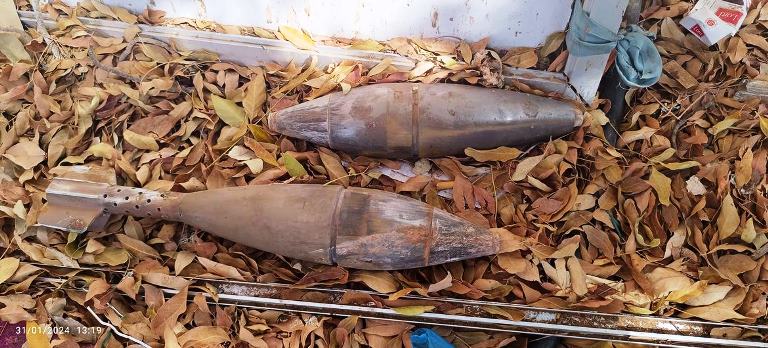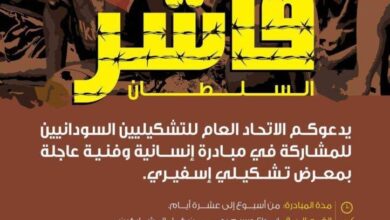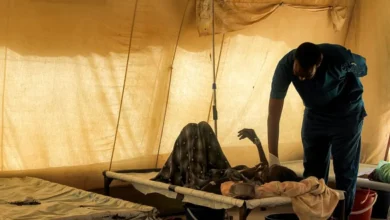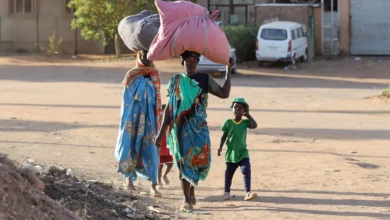War Remnants Threaten the Lives of Sudanese Returning to Their Homes
Kordofan – Report – Burai Al-Abnosi

Sudanese civilians returning to areas liberated from the control of the Rapid Support Forces (RSF) — particularly displaced persons and refugees — are facing multiple dangers. Unexploded ordnance and strange objects, including artillery shells, fragments of copper bullets, and other remnants, pose a grave threat to their lives, with the number of casualties from these remnants increasing daily.
There are growing concerns that residents of Khartoum, Gezira, and Sennar states may also be at risk of death or injury from undiscovered landmines and other explosive remnants, which pose a direct threat to civilians — especially children — and often cause permanent disabilities or lifelong disfigurement.
With the decision to reopen schools in Khartoum State and several other Sudanese cities, many families fear the serious dangers posed by war remnants to students, schoolchildren, and market workers.
Explosion Incidents
According to the National Mine Action Center in Sudan, there have been 40 explosion incidents caused by landmines and war remnants since last April, resulting in 16 deaths and 50 injuries in different parts of the country.
In one incident, the explosion of a large artillery shell inside a school in the village of Al-Ghabsha, east of Umm Rawaba in North Kordofan State, killed three people and injured nine others.
In El-Obeid, the state capital, the explosion of a weapon projectile claimed the life of a child and injured three others.
In northern Omdurman, residents complained about war debris dumped by unidentified individuals west of District 80, including various unexploded munitions that caused a child to lose fingers after tampering with some of them.
Children’s Tragedy
According to Sudan’s National Council for Child Welfare, more than 15,000 children have been injured by explosive devices in conflict zones.
In Omdurman, 15-year-old Moazer Mundher lies motionless in his family’s home, which they returned to after four months of displacement in Gezira State. He lost parts of his limbs when an explosive device detonated beneath him.
As a result of the blast, part of his palm was amputated, two fingers (index and middle) on his right hand were severed, his right foot sustained fractures and deep wounds, his left leg’s bones were broken and an artery severed. He still awaits three more surgeries.
His mother, Laila, recounts:
> “After our displacement to Gezira State, we returned to our home in Tuti Island, Khartoum, only to find that one of the walls had been destroyed by RSF forces to loot three-wheeled vehicles (rickshaws). We decided to repair it. Moazer went out to help with the reconstruction, and as soon as he sat on a chair in the yard, the explosive device beneath him went off.”
> “When the explosion happened, I thought a drone had targeted the neighborhood. But then I saw my husband carrying our son and screaming. It was a horrifying scene. We rushed him to the Military Hospital, then to Omdurman Hospital, where we stayed for two months.”
Banned Landmines
The National Mine Action Center in Sudan revealed three anti-personnel minefields — banned under international law — in the Mogran area and Al-Sunut Forest, southwest of Khartoum, planted by armed groups during battles in the capital.
The center’s director, Maj. Gen. Khaled Hamdan, stated that such planting of mines is a dangerous addition to the list of violations committed during the current war, in clear breach of international agreements and treaties.
He noted that the Ottawa Convention prohibits the use, manufacture, and transfer of anti-personnel mines, which violate the principles of international humanitarian law, and that Sudan was among the first countries to join it.
Hamdan added that these mines are extremely dangerous because they are made of plastic with very minimal metal content, making detection extremely difficult and requiring specialized teams and advanced devices capable of picking up faint signals.
Costly and Complex Process
Mutaz Abdel Qayoum, an official at the UN Mine Action Office in Sudan, explained that removing war remnants and unexploded ordnance is costly and time-consuming. Inspections and searches take a long time, during which tragic incidents can occur — especially as more residents return to neighborhoods across Khartoum.
He said the operation would require 10 teams and could be completed in four years, as new areas with planted explosives in Khartoum are discovered every 60 days.
According to Abdel Qayoum, the situation is further complicated by the fact that the mines were planted haphazardly in Khartoum State without maps or markers indicating their locations.
Priority and Protection
Child protection activist Hossam Nasr told Mashawir that, sadly, children are the most affected by war remnants such as projectiles and unexploded munitions — often mistaking them for toys, which then explode, sometimes even bringing them home without realizing the danger.
He stressed that the top priority for authorities in cities and areas liberated from RSF control should be clearing and removing war remnants, particularly in Khartoum and Gezira, where the population exceeds 17 million.
Nasr warned that failure to remove these explosive devices would effectively wipe out any future for surviving Sudanese children, who make up 40% of the country’s population of over 45 million, according to the latest official statistics.
He also pointed out that youth in Khartoum, Gezira, and Sennar are at high risk from unexploded projectiles left amid residential neighborhoods, and that authorities and relevant organizations must act swiftly and decisively to address the threat.




